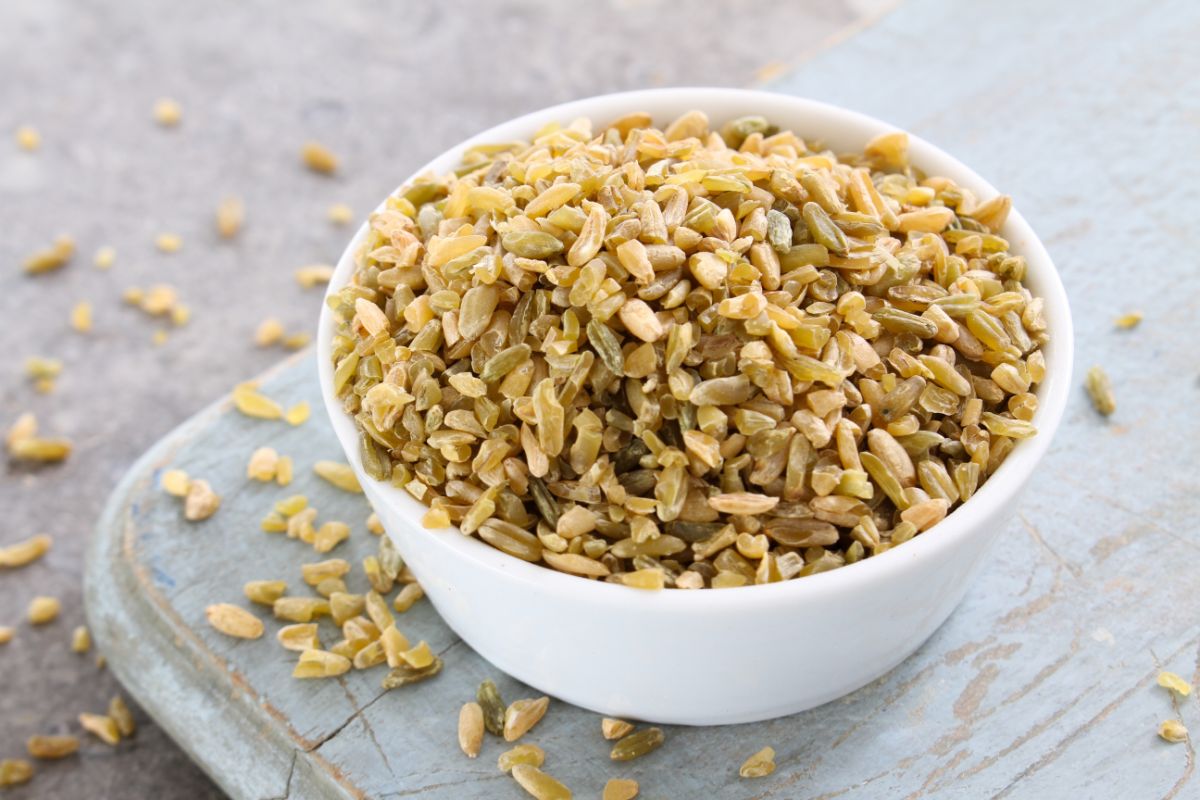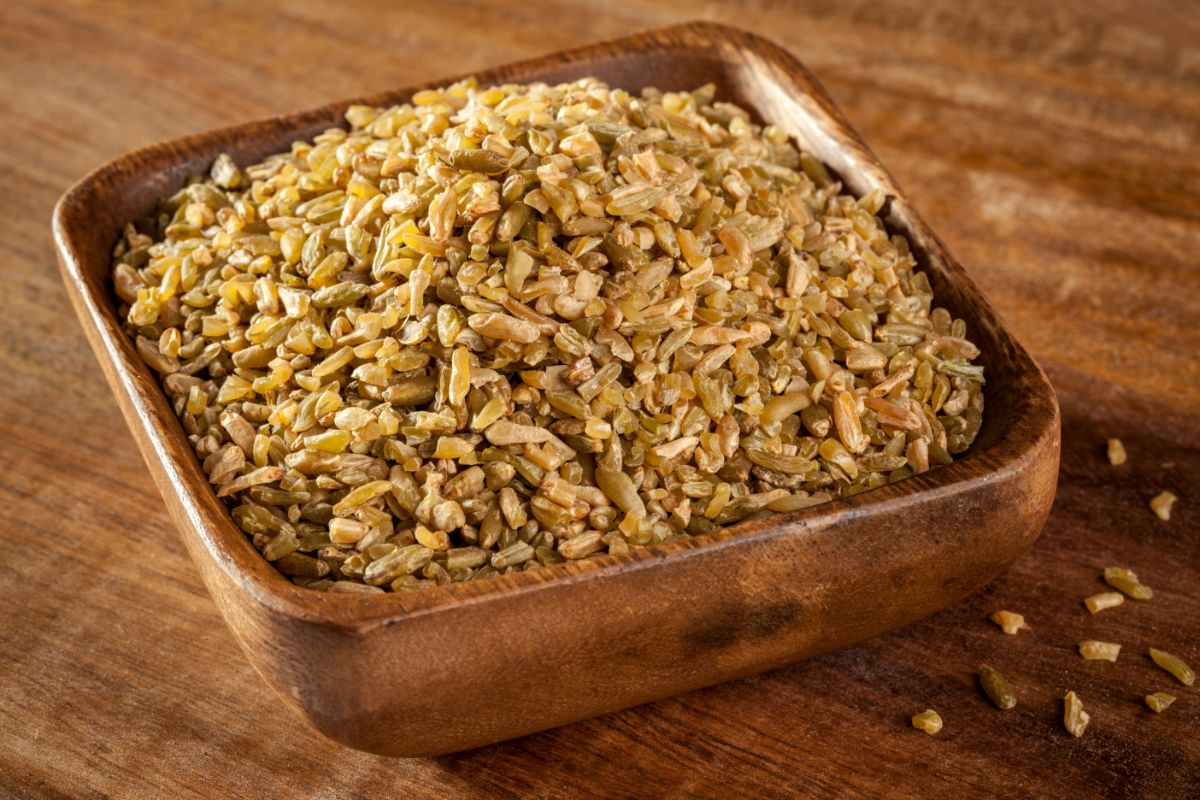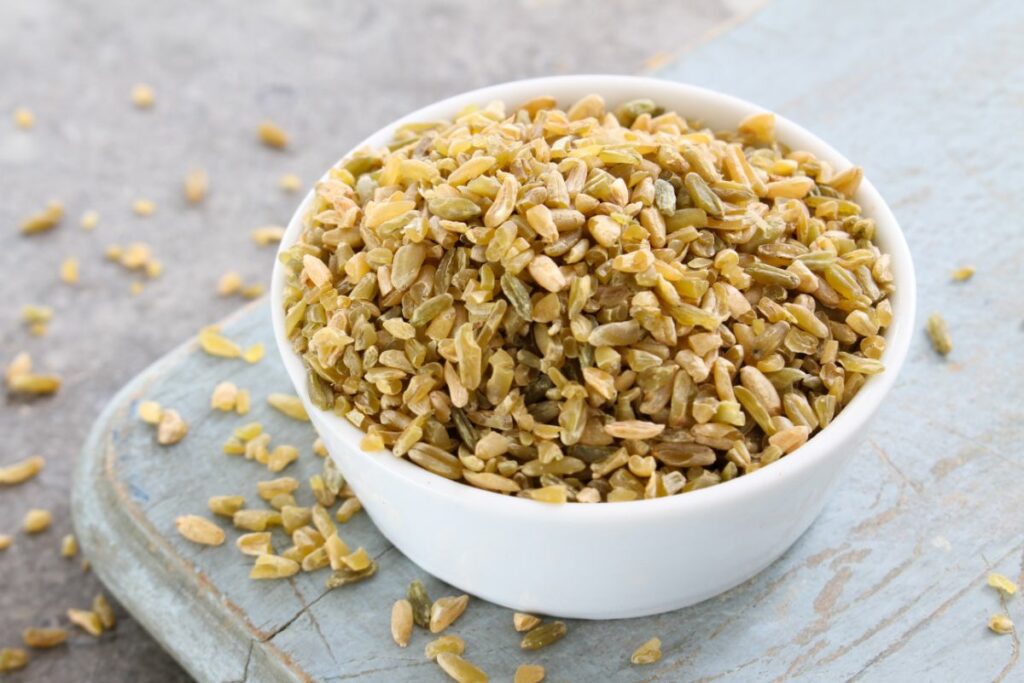In the Middle East and North Africa, a dish called freekeh, which is comprised of whole grains, is considered a staple cuisine and has been consumed there for many generations, notably in the southern regions of Lebanon and Egypt.

In recent years though, in part thanks to an appearance on “The Oprah Winfrey Show” this grain has been getting more popular in the United States.
The “ancient grain” food fad, which includes quinoa and teff, may have been started by vegetarians and vegans, but it is now gaining favor among mainstream American customers who are searching for some alternatives to oats and rice.
For those who don’t know, let’s take a deep dive into freekeh to see what this ancient grain is all about.
What Is Freekeh?
There is a sort of whole grain that is frequently referred to as “farik” or “frik,” and that grain is called freekeh.
Although it is similar to wheat berries, spelt, farro, and bulgur wheat, it possesses its own unique set of characteristics that set it apart from those other grains (Find out Is Bulgur Gluten-Free? here).
The Arabic word “freekeh,” derives from the verb farak, which may be translated as “to rub.”
The word “freekeh” does not refer to a specific plant in any way.
Growers remove durum wheat from its stalks before it has reached its full maturity and then burn the stalks to remove the chaff after the wheat has been harvested.
The moist, immature grains can resist the fire, and the scorched, green kernels can be recovered after some vigorous “rubbing” or threshing. It is this process that makes freekeh.
Does Freekeh Taste Nice?
Even while it has a similar nuttiness and chewy texture to other types of wheat products, such as bulgur or wheat berries, freekeh stands out from the rest of the pack due to its characteristic smoky flavor.
You may also get freekeh that has already been seasoned. While you can get many flavors, the most traditional ones are rosemary sage and tamari.
Cooking Freekeh
The cooking period for whole freekeh is around 45 to 50 minutes; however, you can typically purchase it cracked, which decreases the cooking time in half without compromising the nutritional value of the full grain (for more information on cooking freekeh, click here).
In a large saucepan that has been amply covered with water or broth, bring all of the freekeh to a boil.
After it has come to a boil, turn the heat down to a simmer and let it cook for approximately forty-five minutes, or until the grains have achieved the consistency you want them to be.
After that, you will have no trouble draining any water that is remaining.
To make cracked freekeh, you will need to use a ratio of liquid to grain that is somewhat higher than the conventional 2:1 ratio, specifically approximately 2.5 cups of water or broth for every cup of freekeh.
This will ensure that the freekeh is properly hydrated and cracked when it is cooked.
Cooking freekeh over low heat with the lid on for 15–20 minutes, or until the grains have absorbed all of the liquid and become flexible, is the recommended method of preparation.
Make it seem more appetizing by fluffing it with a fork right before you serve it.

Freekeh, similar to spaghetti, can be prepared by boiling salted water with a touch of olive oil added to the pot.
This approach is favored by some individuals. You have the choice to experiment with doing it both ways and decide for yourself which approach works best for you.
Freekeh is a versatile grain that may be included in many different types of foods, such as whole-grain salads, soups, tabbouleh, risottos, stir-fries, and pilafs.
If you are already accustomed to creating meals using whole grains, you will have plenty of ideas on how to employ freekeh because it is quite similar to other whole grains.
If you are familiar with the process of preparing it with rice, likely, you are also familiar with the process of preparing it with freekeh.
How To Store Freekeh
It is essential to follow any storage guidelines for whole grains if you want to keep the freshness of your freekeh. This will prevent it from becoming stale.
In general, the freekeh should be stored a container that is hermetically sealed against air, and it should also be shielded from heat, moisture, and light.
If it is properly maintained, whole freekeh may be kept edible for years without turning rancid or losing its nutritional value.
Because cracked grains do not keep their freshness for quite as long as whole grains, cracked freekeh should be stored in an airtight container in the refrigerator or freezer if it is to be kept for more than a few months.
After it has been prepared, freekeh that is not going to be used immediately can be kept in the refrigerator for up to three or four days in an airtight container, or it can be frozen for up to three months.
Where Can I Buy Freekeh?
Cracked freekeh is frequently seen on the shelves of natural food stores among other types of pre-packaged whole grains.
In contrast to other whole grains, freekeh might be difficult to locate in the bulk foods section of a supermarket though.
There is a good chance that you will be able to locate it in the department of the supermarket that is devoted to unusual foods, along with other products from the Middle East.
This grain is also sold in a good number of organic grocery stores and in some of the more localized food co-ops that sell groceries.
On the websites of freekeh importers, you may find a store locator for freekeh, and of course, it is also easily accessible online.
A specialty shop that deals in items from the Middle East may also stock well-known items from other parts of the world.
Summary
Freekeh is an ancient grain that is very popular in the United States due to its nutritional value, and the fact that it is a good alternative to try if you are not a fan of other grains, such as wheat (see also ‘How To Grow Wheat‘).
Though it may be a bit difficult to find in stores, checking out the international food section may lead you to find it.








